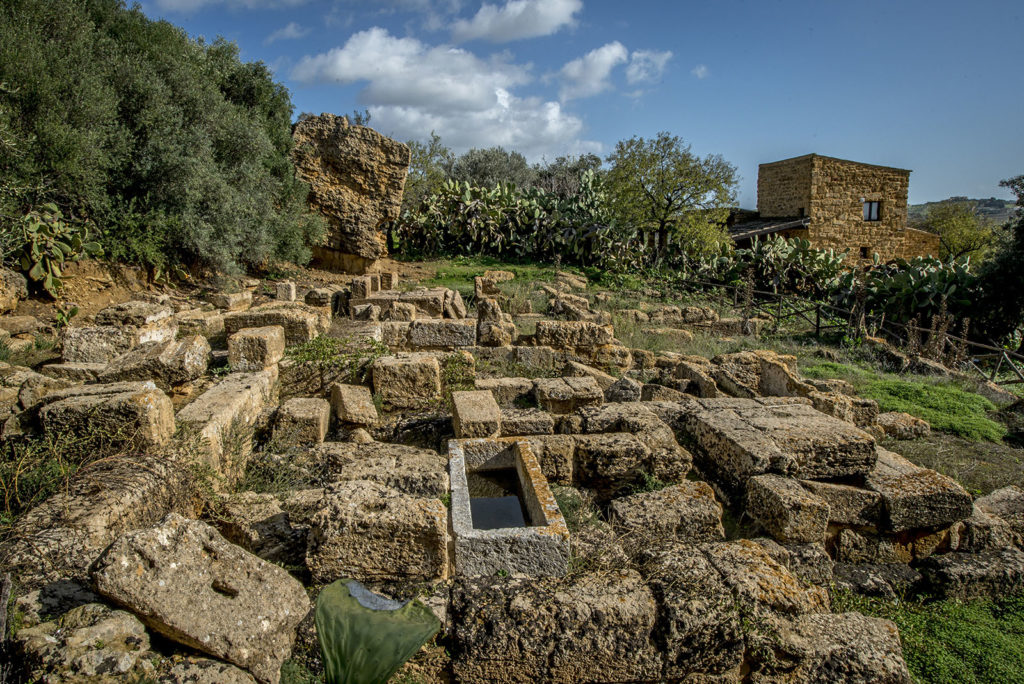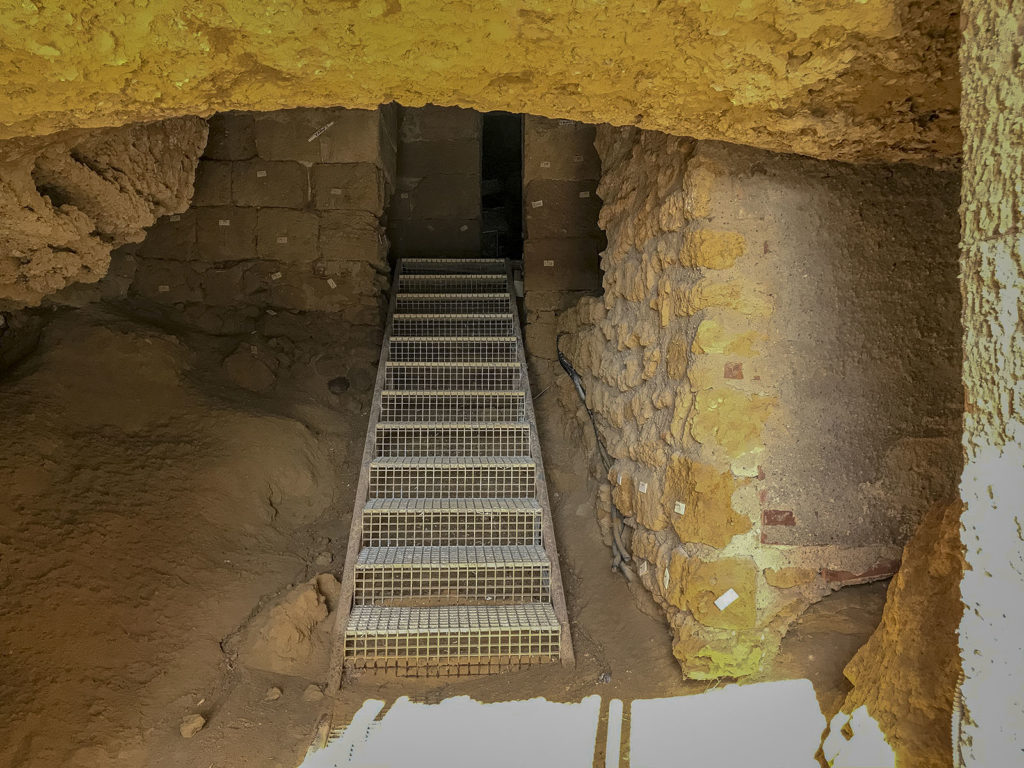The tendency of the Romans to flaunt their wealth is reflected not only in their houses, but by their funerary structures: tombs for the dead, like houses for the living, would have represented the owner’s social status and wealth.
The necropolis of Agrigentum was positioned under the southern walls and the choice of this area has significant symbolic significance when we consider that this was the way to the sea, and therefore to Rome. It was divided into several sectors: the oldest (2nd-3rd century AD) is known as the Giambertoni Necropolis and was characterised by limestone chest tombs and carved sarcophagi, including the very valuable one of the child.
 Another area (3rd-6th century AD) is located near the
Temple of Concordia
Another area (3rd-6th century AD) is located near the
Temple of Concordia
and is known as the necropolis sub divo, i.e. open-air; it consisted of around 130 trapezoidal chest tombs dug directly into the rock.
Finally, a large communal catacomb called the Fragapane Grotto (4th-5th century AD) connected the two aforementioned areas through underground loculi and corridors. The Fragapane Grotto opens onto what has been called the Via dei Sepolcri (Road of the Tombs), a route that crosses the necropolis from east to west, obtained from a canal from the Greek age that was probably used to transport water to the city’s network of aqueducts. At some points that form roundabouts, between the connecting corridors, the
catacombs
The Fragapane Grotto opens onto what has been called the Via dei Sepolcri (Road of the Tombs), a route that crosses the necropolis from east to west, obtained from a canal from the Greek age that was probably used to transport water to the city’s network of aqueducts. At some points that form roundabouts, between the connecting corridors, the
catacombs
were built using the pre-existing bell-shaped cisterns of the Greek age, which thus became real burial chambers.